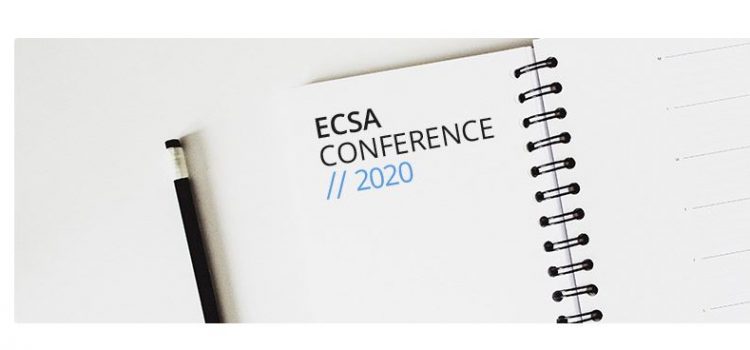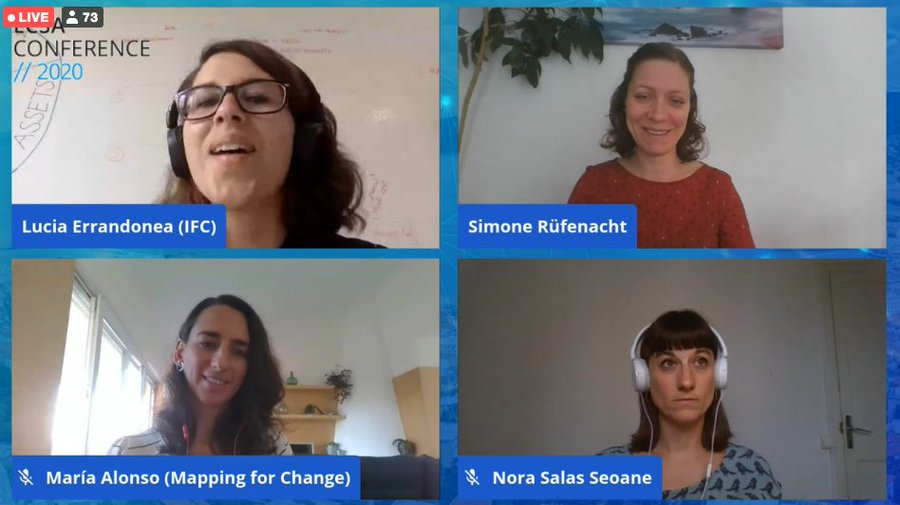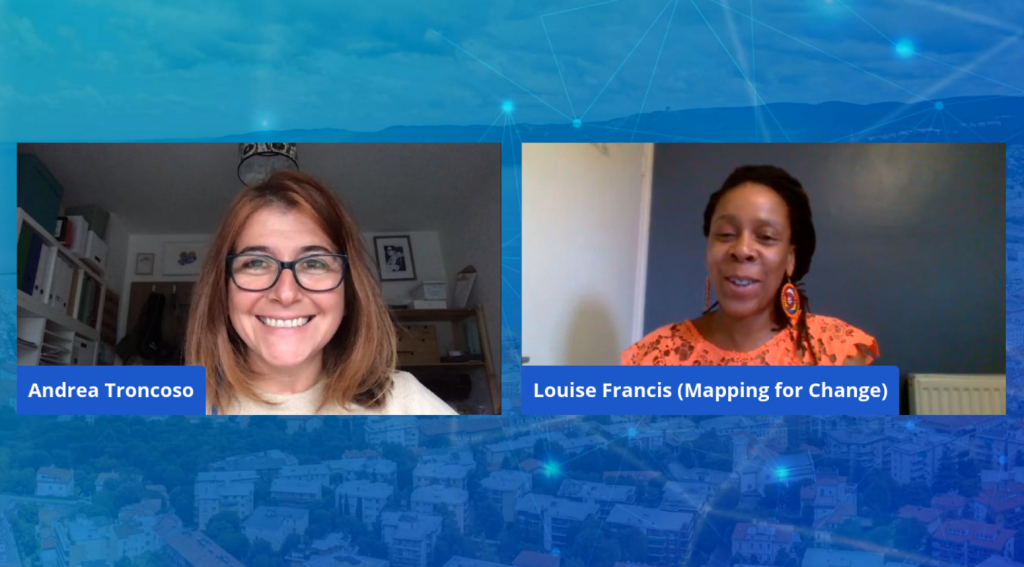
It’s always a pleasure to meet the global citizen science community, the most participative and critical-spirit of all! To be honest, we had our doubts about how engaging a 5-day online conference would be. Now, we can only be grateful for the tremendous effort the ECSA team has made to adapt the format to the current COVID restrictions.
This year, members of the D-NOSES team fully engaged in the conference with a poster presentation and a workshop. We introduced the engagement model we developed for the project and provided examples of how we have implemented this model in the different pilots.

Our poster: #8 steps to addressing odour pollution with citizens: a model to orchestrate quadruple helix stakeholder engagement in citizen science

Simone chairing the session with Nora, Lucía and María 
Louise presenting the poster
Both sessions went down well with the participants and triggered lots of interesting discussions both on the online chat and during the Q&A. Some topics that were brought up were very insightful, and so we thought it might be of interest to share the highlights here:
The quadruple helix stakeholder model
This is at the core of our engagement strategy as we try to involve the public authorities, industry, civil society and academia in all the project pilots. In Muki Haklay’s words “the model indicates how to create holistic innovation that include public, private, universities and research, and third sector organisations”.
Some relevant references and links shared:
- Quadruple and quintuple innovation
- The theory of the helix model
- Co-shaping the future in quadruple helix innovation
Who to engage first?
When asked about which stakeholders to engage first – the conversation got lively! Should it be the authorities as they could open doors, or perhaps the community so you can gain a better understanding of those affected, or the industry to try and get them onside…? There is no right answer. It will all depend on the location, the issue you are dealing with, the power relationships existing among the different stakeholders and the resources that you’ve got. But remember, whoever you engage first, be transparent and share your plans and manage expectations.
It was suggested that you should engage them all at once – invite them around the table to increase understanding between the different stakeholders. This is not always possible, or indeed safe. Often tensions are high when a community is fighting for change. Even if the situation would be safe, you should consider the power relationship between and within the groups, some citizens may feel intimidated in the presence of the authorities, for example.
When the available technology is just a pen and paper
OdourCollect is the tool (app) that we’re using to gather real time odour observations (data) in the D-NOSES pilots, but access to technology is uneven across the world and some citizens simply do not like/trust/understand it. Our alternative is to offer ‘smell diaries’ for participants to record their odour observations in – a printed sheet of paper with fields to complete which mirror the data collected in the app. These records can then be digitised by other members of the community (e.g. teachers or community champions) or by the pilot leader.
That all sounds fantastic, but… how much effort does it take?
Rosy Mondardini, on the chat, nailed it! “It’s useful to know that you need a lot of resources to do things the right way”. As a research project, we’re trying hard to conduct meaningful engagement actions in the pilots. Hopefully, the findings and resources from D-NOSES can be used for smaller or less supported projects. The more citizen science becomes accepted and understood, the easier future engagement will be!
Katerina Zourou: It is interesting to see civic engagement situated in a collaboration with local partners- I was curious to see how it works in practice- thanks for the insights you give!